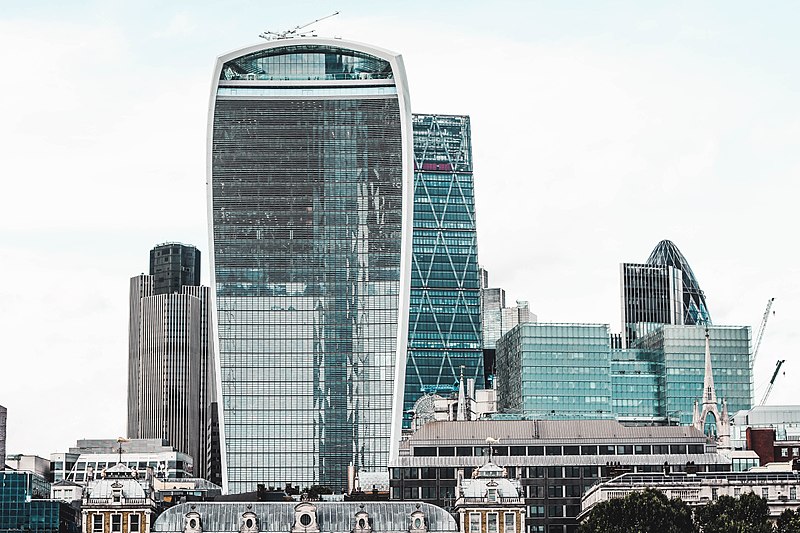In Prospect magazine, James Stevens Curl and Barnabas Calder disagree on how Brutalist architecture has influenced destroyed urban areas in so many British cities. This is Curl’s opening salvo:

20 Fenchurch Street in London has been nicknamed the “Walkie-Talkie” due to its distinctive design.
Image by Toa Heftiba via Wikimedia Commons.
Visitors to these islands who have eyes to see will observe that there is hardly a town or city that has not had its streets — and skyline — wrecked by insensitive, crude, post-1945 additions which ignore established geometries, urban grain, scale, materials, and emphases.
Such structures were designed by persons indoctrinated in schools of architecture in ways that made them incapable of creating designs that did not cause immense damage and offend the eye, the sensibilities, and the spirit. Harmony with what already exists has never been a consideration for them, as it was not for their teacher: following the lead of “Le Corbusier” (as Swiss-French architect Charles-Édouard Jeanneret called himself), they have, on the contrary, done everything possible to create buildings incompatible with anything that came before. It seems that the ability to destroy a townscape or a skyline was the only way they have been able to make their marks. Can anyone point to a town in Britain that has been improved aesthetically by modern buildings?
Look at the more recent damage done to the City of London, with such crass interventions as the so-called “Walkie-Talkie” (which, through its reflectivity, has caused damage on the street below), or the repellent stuff inflicted on several cities by the infamous John Poulson and some of his bent cronies (from the 1950s until they were jailed in 1974). Quod erat demonstrandum.
How has this catastrophe been allowed to happen? A series of totalitarian doctrinaires reduced the infinitely adaptable languages of real architecture to an impoverished vocabulary of monosyllabic grunts. Those individuals rejected the past so that everyone had to start from scratch, reinventing the wheel and confining their design clichés to a few banalities. Today, form follows finance, when modern architecture is dominated by so-called “stars,” and becomes more bizarre, egotistical, unsettling, and expensive, ignoring contexts and proving stratospherically remote from the aspirations and needs of ordinary humanity. Their alienating works, inducing unease, are, without exception, inherently dehumanising and visually repulsive.



